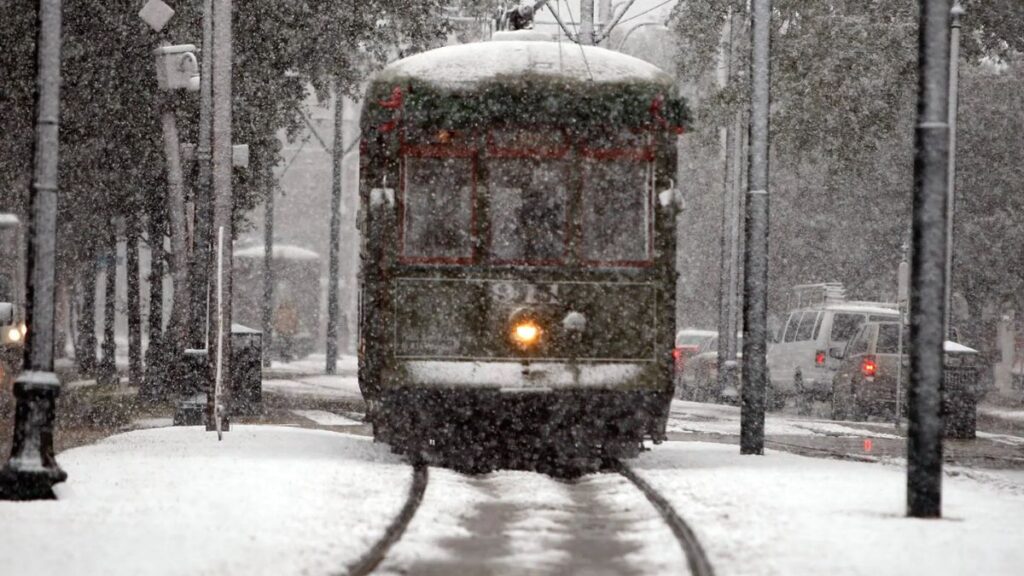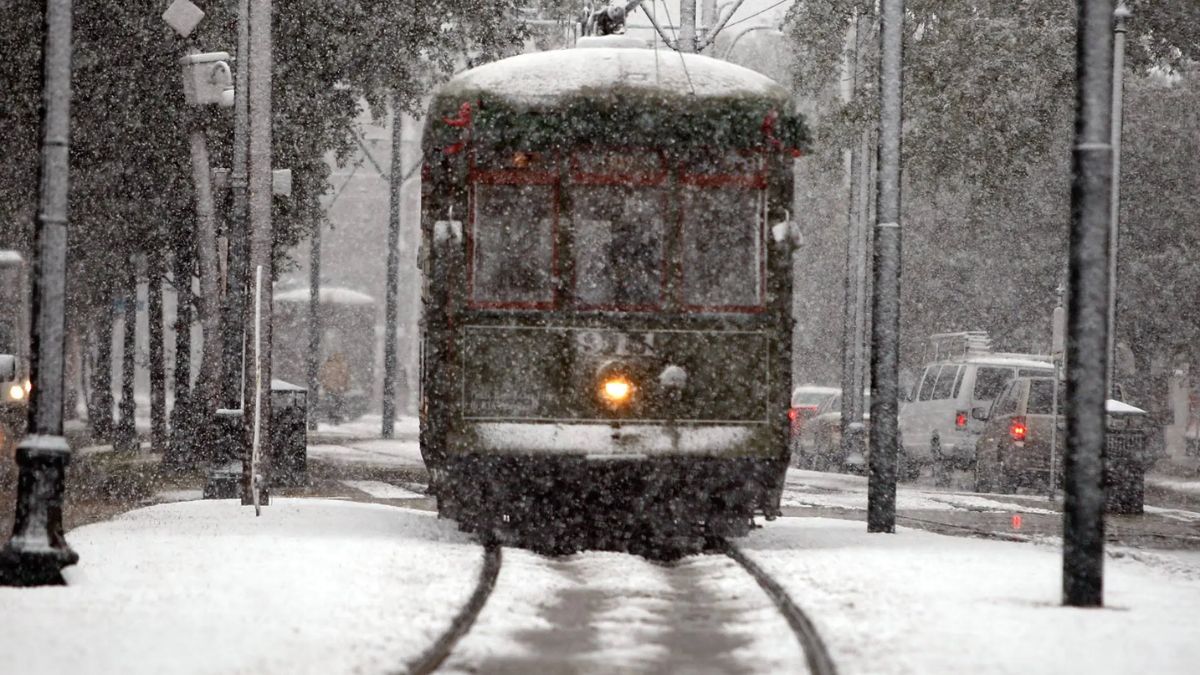No, it rarely snows in New Orleans. The city’s subtropical climate and proximity to the Gulf of Mexico make snowfall highly unlikely. While there have been a few instances of light snowfall or flurries in the past, significant snow accumulation is extremely rare.
New Orleans primarily experiences warm and humid weather, with mild winters throughout the year. The city is more known for its jazz music, Creole cuisine, and Mardi Gras celebrations than for its snowy landscapes.

New Orleans is a vibrant and culturally rich city in the southeast part of the United States. Known for its jazz music, Creole cuisine, and Mardi Gras celebrations, New Orleans experiences a subtropical climate. With its warm and humid weather, the city rarely sees snowfall.
In this article, we will explore the question, “Does it snow in New Orleans?” and delve into the climate patterns of this unique city.
Location Overview
Situated in southeastern Louisiana, New Orleans lies on the banks of the Mississippi River near the Gulf of Mexico. The city is known for its unique blend of French, African, and American cultures, which is reflected in its music, cuisine, architecture, and traditions.
New Orleans is famous for its rich cultural heritage and diverse music scene. Jazz, blues, and zydeco are deeply rooted in the city’s history and are celebrated through various festivals, clubs, and street performances.
New Orleans is also known for its lively and colorful festivals, with Mardi Gras being the most famous. This annual celebration, known as “the greatest free show on Earth,” attracts millions of visitors who gather to enjoy parades, elaborate costumes, music, and vibrant street parties.
In recent years, the city has made significant efforts to rebuild and recover from the devastating impact of Hurricane Katrina in 2005. The resilience and spirit of the local community have played a vital role in the city’s recovery and revitalization, making New Orleans a symbol of strength and cultural significance.
Geography and Climate of New Orleans
Geographically, New Orleans is located in a low-lying area and is surrounded by water. The Mississippi River flows along its eastern side, while Lake Pontchartrain borders it to the north.
The city is built on a series of natural levees and elevated ridges formed by the river’s historic flooding and sediment deposition. These geographical features have significantly influenced the city’s development and history.
New Orleans experiences a subtropical climate characterized by long, hot summers and mild winters. The city’s proximity to the Gulf of Mexico contributes to its high yearly humidity levels.
Summers are typically hot and humid, with temperatures often reaching the 90s Fahrenheit. Winters are generally mild, with temperatures ranging from the mid-40s to the upper 60s Fahrenheit.
Historical Snowfall Record
Though snowfall is rare, New Orleans witnessed snowflakes in a few notable instances. One of the most memorable snow events occurred on December 11, 2008, when a light snowfall surprised the city’s residents.
The last time snow accumulated in measurable amounts in New Orleans was on Christmas Day in 2004, when a winter storm brought around 2 inches of snow to the city.
Winter Season & Snowfall Pattern
New Orleans is no stranger to precipitation, with an average annual rainfall of around 64 inches. The city experiences rain throughout the year, with the wettest months typically being May through September. However, this precipitation primarily comes in the form of rain rather than snow.
While New Orleans can experience occasional cold spells during winter, snowfall is extremely rare. The city’s subtropical climate and proximity to the Gulf of Mexico contribute to its warm and humid weather patterns, making it highly unlikely for snow to form and accumulate.
As you move northward towards Louisiana’s northern parishes and into states like Mississippi, Alabama, and Georgia, the chances of seeing snow increase. However, even in these regions, snowfall is typically infrequent and does not accumulate significantly.
Location To Enjoy Snow
While snowfall is extremely rare in New Orleans itself, there are a few locations near the city where you can enjoy snow during the winter months:
- Mississippi Snow Play Areas
Mississippi, the neighboring state to Louisiana, has a few snow play areas that are within driving distance of New Orleans. These areas are specifically designed for winter fun and offer snow tubing, sledding, and snowmen-building activities.
Bogue Chitto Water Park in Franklinton, Mississippi, and Flint Creek Water Park in Wiggins, Mississippi, are popular destinations for snow enthusiasts.
- Mississippi Gulf Coast
If you are looking for a snow getaway combined with coastal charm, head to the Mississippi Gulf Coast. During rare snowfall events, areas like Biloxi, Gulfport, and Bay St. Louis may see some snowflakes.
While the snow may not accumulate significantly, the coastal scenery combined with a touch of snow can create a picturesque experience.
- Northern Louisiana
As you venture further north within Louisiana, the chances of encountering snow increase. Cities and towns in northern Louisiana occasionally experience snowfall during winter. While snow accumulation may vary, these areas provide a better chance of seeing snow compared to New Orleans.
- North Georgia and the Smoky Mountains
If you are willing to travel a bit farther, the North Georgia region and the nearby Smoky Mountains offer opportunities for snow-filled adventures. Towns such as Helen, Georgia, and Gatlinburg, Tennessee, are known for their picturesque winter landscapes and winter sports activities.
- Ski Resorts
Although not in close proximity to New Orleans, ski resorts in neighboring states like Colorado, Utah, and Vermont provide excellent opportunities for snow lovers. Destinations like Aspen, Breckenridge, Park City, and Stowe offer world-class skiing and snowboarding experiences.
Remember to check weather forecasts and plan your trip accordingly, as snowfall in these areas can be unpredictable. Additionally, some locations may require entrance fees or have specific operating hours during the winter season.
While New Orleans may not be known for snowfall, exploring nearby areas or planning a winter getaway to destinations that embrace the winter wonderland can provide snow enthusiasts with an exciting and unique experience.
Factors Influencing Snowfall
Several factors play a role in determining whether or not a particular location will experience snowfall. Some of these factors include geographical location, altitude, and prevailing weather patterns.
New Orleans’ proximity to the Gulf of Mexico, combined with its low elevation and warm climate, creates an environment that is generally unfavorable for snow formation.
Conclusion
With its subtropical climate and warm weather, New Orleans is not known for its snowfall. While the city may occasionally see snowflakes or even experience light dusting, significant snow accumulation is extremely rare.
Residents and visitors to New Orleans can expect a mostly snow-free experience, allowing them to enjoy the city’s unique culture, delicious cuisine, and vibrant festivities all year round.
